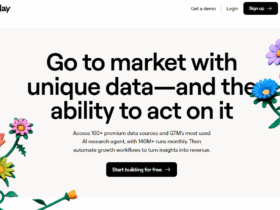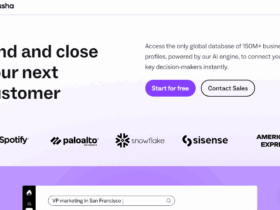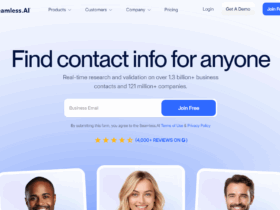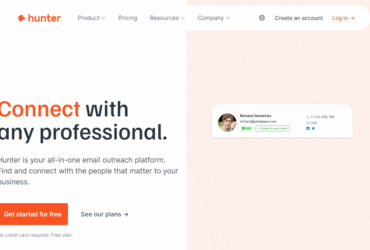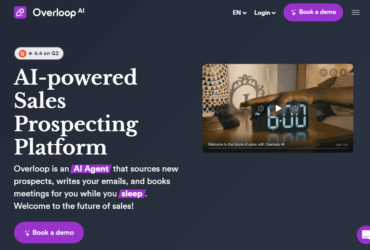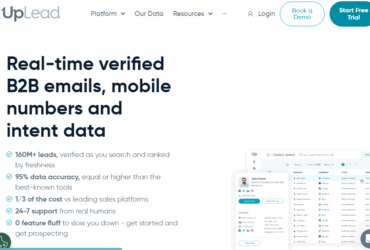Hey there, fellow marketers and brand enthusiasts! So, you’re on the hunt for the crème de la crème of influencer marketing platforms in 2025? Well, buckle up, because I’ve dived deep into the influencer realm to bring you the real scoop on the top platforms out there. No fluff, just the good, the bad, and the Insta-worthy.
1. GRIN
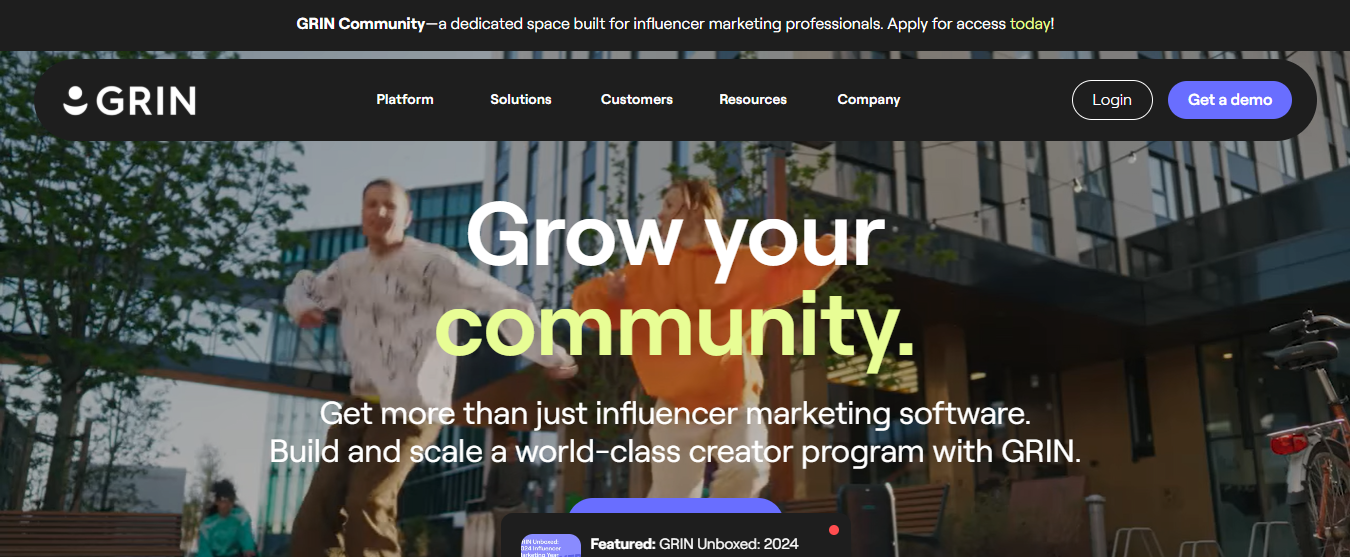
The Lowdown: GRIN is like the Swiss Army knife for influencer marketing. It’s packed with tools for every stage of your campaign.
What I Loved:
-
Comprehensive Tools: From influencer discovery to ROI tracking, it’s all here.
-
E-commerce Integration: Seamlessly connects with platforms like Shopify.
What Bugged Me:
-
Learning Curve: Takes time to master all the features.
-
Pricing: Not the most budget-friendly option.
Pricing: Custom pricing based on your needs.
2. Influencity
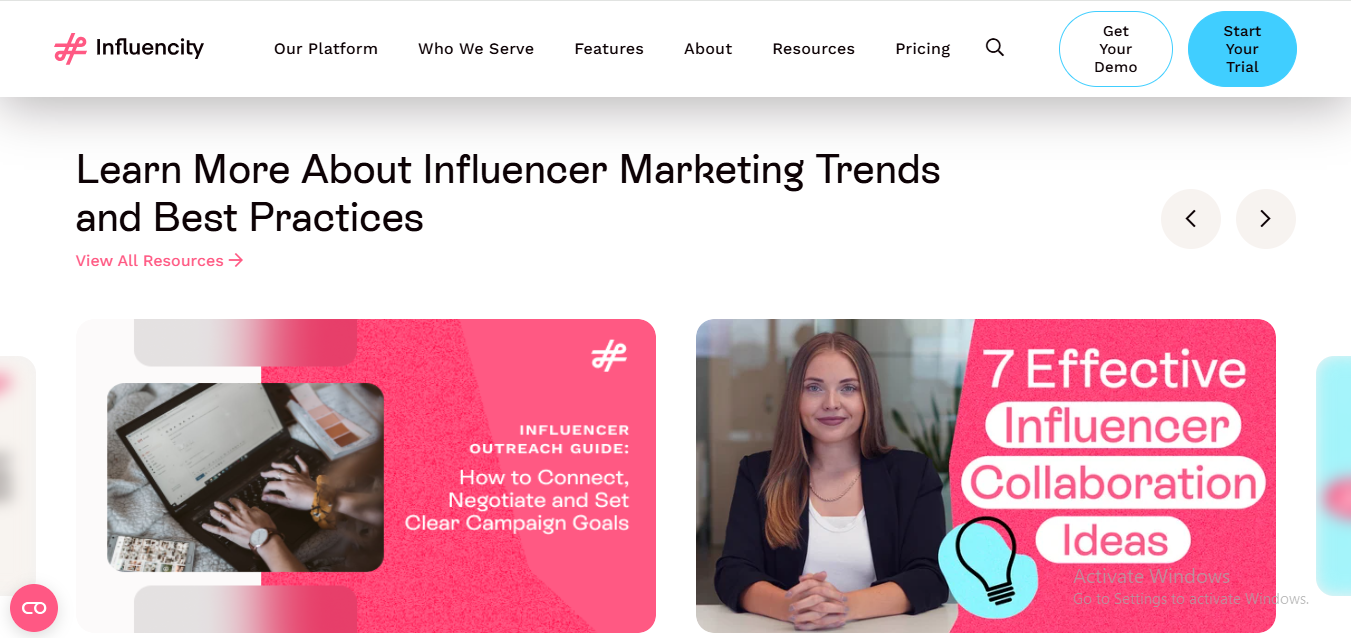
The Lowdown: Influencity is your go-to for data-driven influencer campaigns. It’s all about the numbers.
What I Loved:
-
AI-Powered Search: Find the perfect influencer match with smart filters.
-
Detailed Analytics: Track every metric that matters.
What Bugged Me:
-
Interface: Could be more intuitive for beginners.
-
Support: Response times can vary.
Pricing: Flexible plans; contact them for details.
3. Hashtag Paid
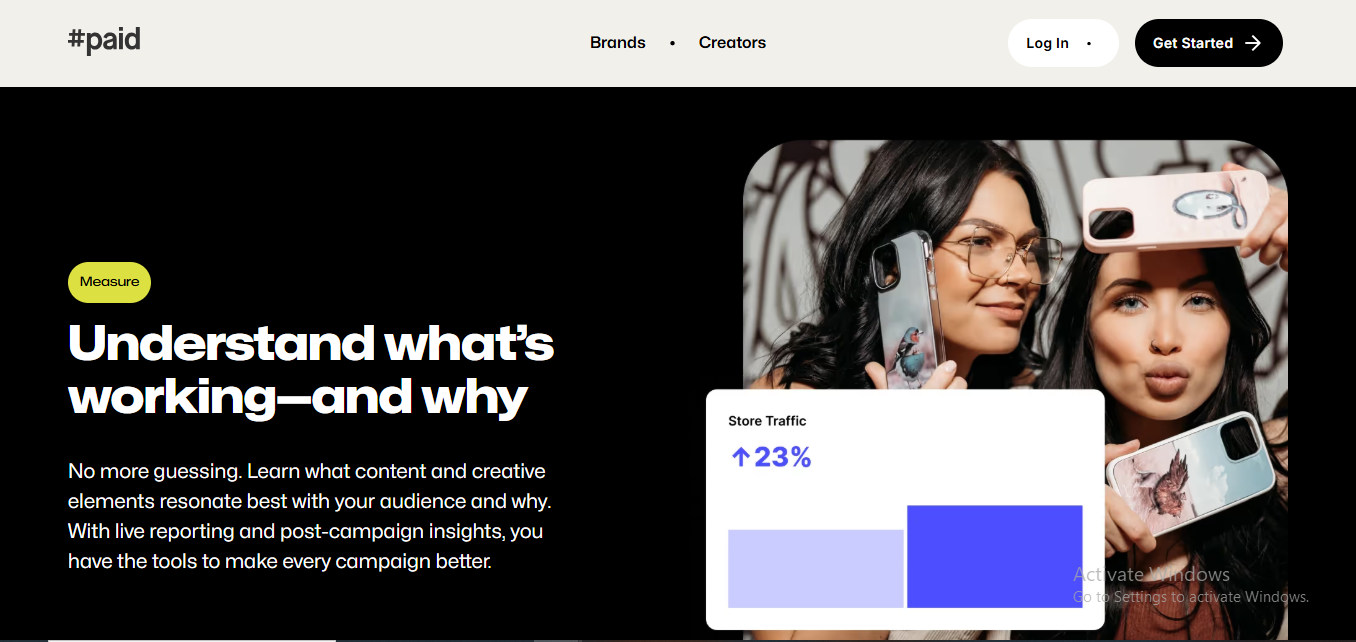
The Lowdown: #paid is like the Tinder for brands and influencers. Swipe right on your next campaign partner.
What I Loved:
-
Creator Matching: AI helps you find the right fit.
-
Content Licensing: Easily manage usage rights.
What Bugged Me:
-
Limited Customization: Some campaign aspects are rigid.
-
Pricing Transparency: Hard to find clear pricing info.
Pricing: Custom pricing; reach out for a quote.
4. Lolly
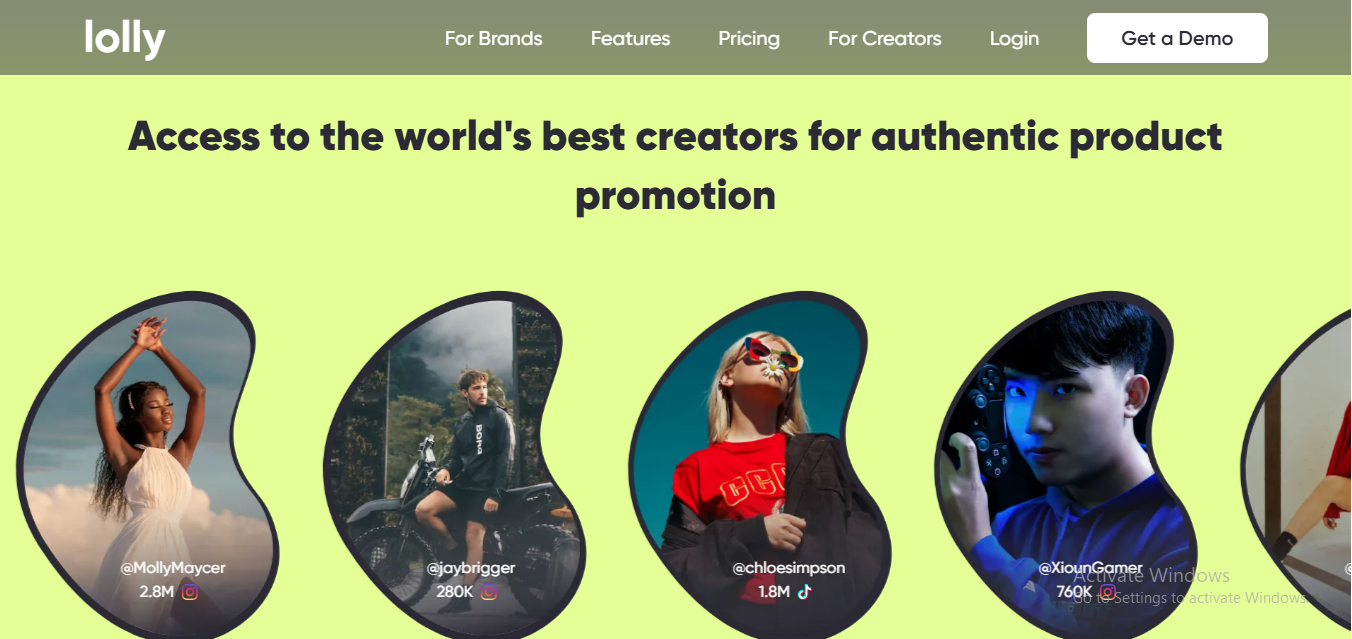
The Lowdown: Lolly is the new kid on the block, focusing on performance-driven influencer marketing.
What I Loved:
-
User-Friendly: Simple setup and campaign management.
-
Real-Time Analytics: Monitor performance as it happens.
What Bugged Me:
-
Limited Features: Still growing its toolkit.
-
Smaller Influencer Pool: Not as extensive as competitors.
Pricing: Transparent pricing; starts at budget-friendly rates.
5. Aspire.io
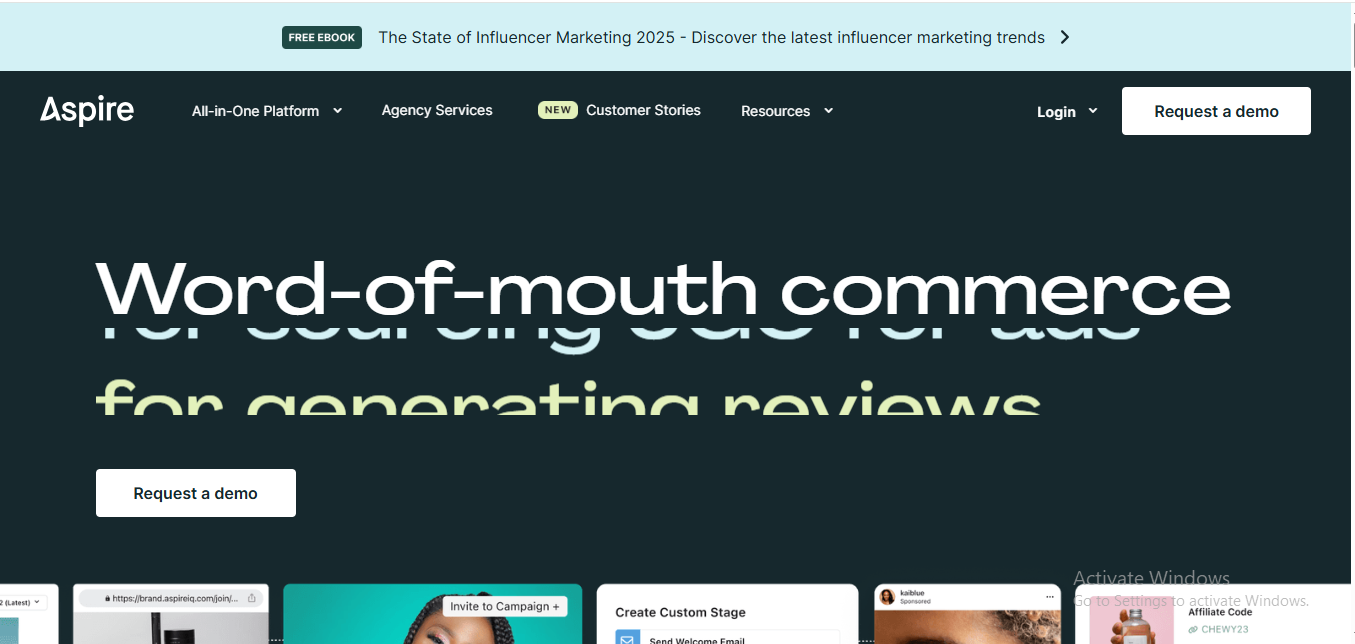
The Beyoncé of influencer platforms. Period.
What I loved:
This one’s polished AF. Aspire makes influencer marketing feel like running a high-end CRM. You get automated workflows, campaign briefs, creator discovery tools, and even affiliate link tracking. It’s basically like Salesforce had a baby with Instagram.
What I didn’t:
It’s not cheap. If you’re a small brand or solo creator, you might wince at the pricing. Also, the interface is robust but slightly overwhelming at first.
Pros:
-
Search 1M+ influencers
-
Track ROI like a pro
-
Great for DTC brands and ecom
Cons:
-
Learning curve if you’re new
Pricing: Custom (aka, more than a Starbucks latte budget)
6. Collabstr
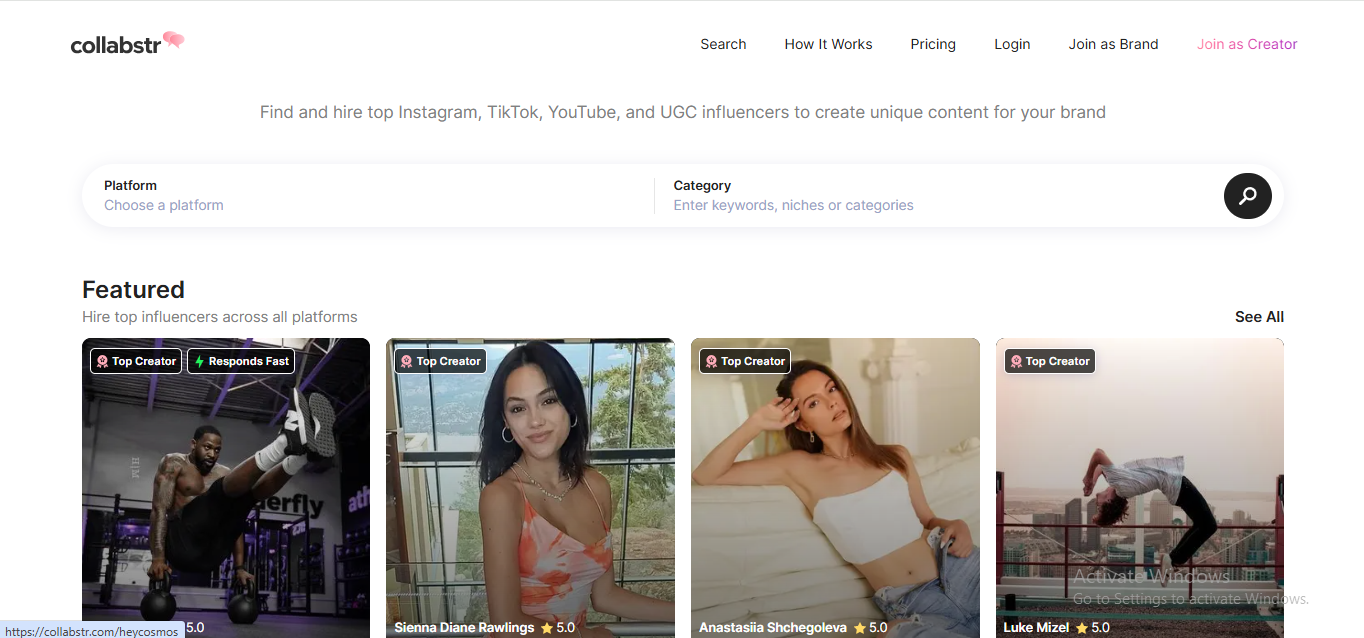
The Tinder of influencer collabs – swipe, connect, get paid.
What I loved:
So dang easy. Collabstr is plug-and-play for brands. You post a job, creators apply, boom – you’re off to the races. It’s creator-first, so influencers love it too. Big plus if you want no-nonsense, transactional gigs.
What I didn’t:
Feels a bit like gig work – not much in the way of long-term relationship building or strategic campaigns. But hey, not everyone’s lookin’ for marriage, right?
Pros:
-
Super user-friendly
-
Upfront pricing
-
Fast collabs
Cons:
-
Limited campaign strategy tools
-
Not ideal for big, complex activations
Pricing: Free to post; creators set rates
7. Captiv8

The techy best friend who also went to business school.
What I loved:
Data. So. Much. Data. Captiv8 serves insights like Gordon Ramsay serves opinions – hot, sharp, and no fluff. It connects to every major social platform and gives you audience psychographics, content forecasting, even competitive benchmarking.
What I didn’t:
It’s more brand-oriented, so if you’re a solo influencer looking to get noticed, this isn’t your stage. Also, it’s not the cheapest software in the drawer.
Pros:
-
Ridiculously good analytics
-
Cross-platform integration
-
Enterprise-level features
Cons:
-
Not creator-focused
-
Slightly clinical UX
Pricing: Enterprise-level – definitely not for side hustlers
8. Kolsquare

Your European marketing plug
What I loved:
Kolsquare knows its Euro audience. If your brand wants to tap into French, German, or other EU influencers, this platform gives off major “we know the culture” vibes. I loved how easy it was to filter by geo, niche, and audience data.
What I didn’t:
The interface is a little… meh? Not ugly, but not TikTok-pretty either. Also, it leans more toward PR-style outreach than automation-heavy platforms like Aspire.
Pros:
-
Great for EU campaigns
-
In-depth audience analysis
-
Solid reporting tools
Cons:
-
UX isn’t as modern
-
Lacks automation bells & whistles
Pricing: Custom pricing – expect mid to high tier
9. Popular Pays
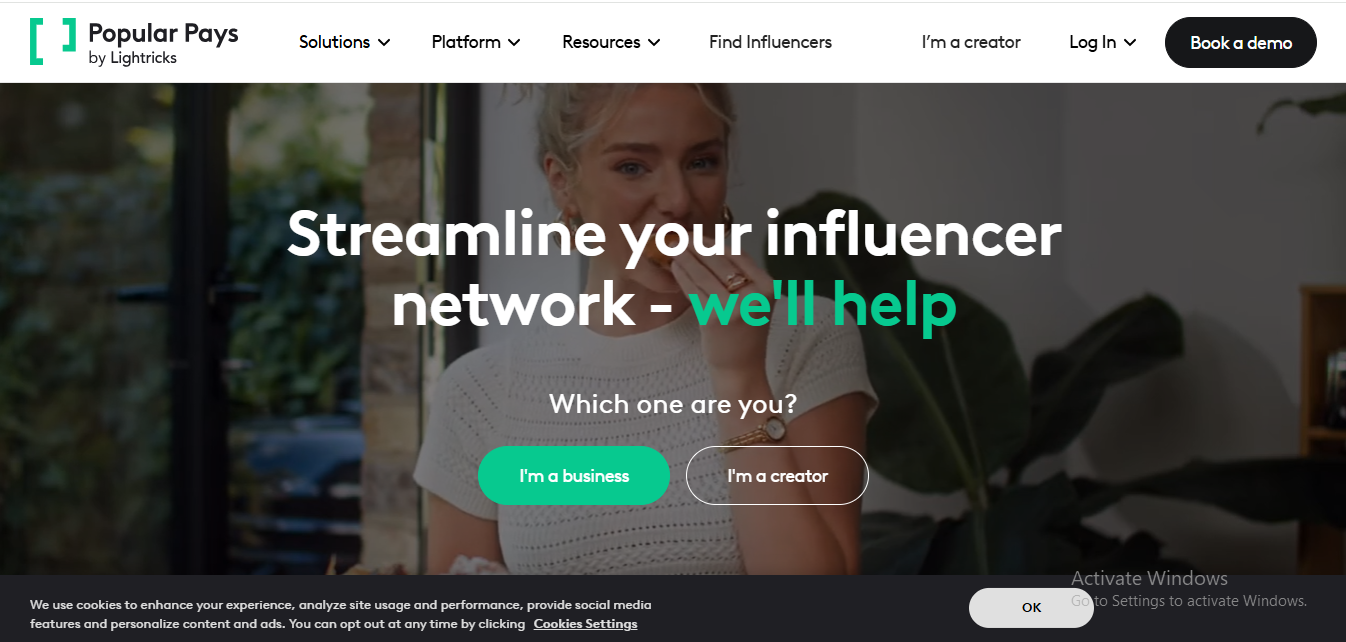
Think of it as the Airbnb of influencer content.
What I loved:
Popular Pays makes it stupid easy to run content campaigns. You can crowdsource creative, test multiple influencers, and even repurpose content for ads. It’s creative-first, so if you care more about the visuals than vanity metrics, you’ll be obsessed.
What I didn’t:
It doesn’t go super deep on influencer analytics or long-term campaign strategy. And again, not budget-friendly for beginners.
Pros:
-
Great for UGC + paid social
-
Streamlined process
-
Quick turnaround
Cons:
-
Less focus on influencer relationship management
-
Not ideal for large-scale influencer strategy
Pricing: Custom pricing – likely for mid to large brands
10. The Cirqle
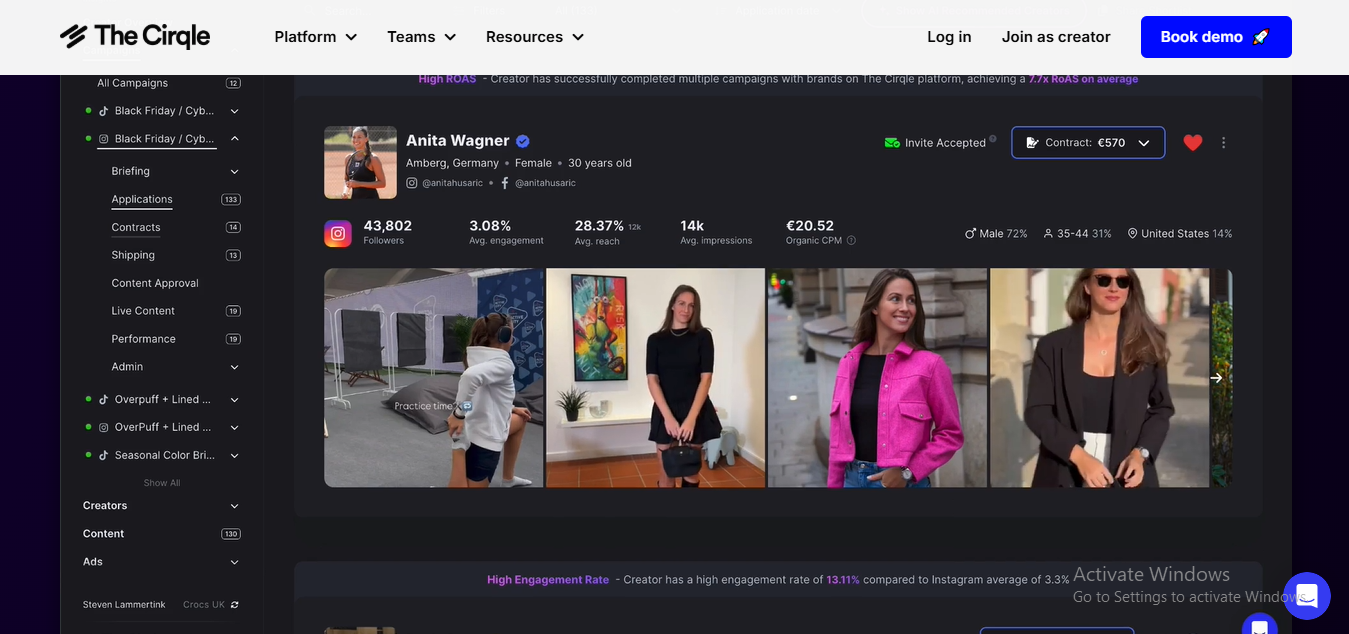
The artsy one that also knows Excel.
What I loved:
The Cirqle is sleek. It’s built for brands who care about storytelling, visuals, and conversions. I loved the affiliate-style tracking options – you can actually see which influencer sold what, where, and how. Creator sign-up is smooth too.
What I didn’t:
The onboarding was a bit slow. Also, it leans heavily into performance-based campaigns, which is great for ROI but less warm-and-fuzzy for influencer relationships.
Pros:
-
Gorgeous UI
-
Focus on performance metrics
-
Global creator reach
Cons:
-
Needs better onboarding guides
-
More suited for ecom than lifestyle brands
Pricing: Custom plans – mid to high range
11. TRIBE
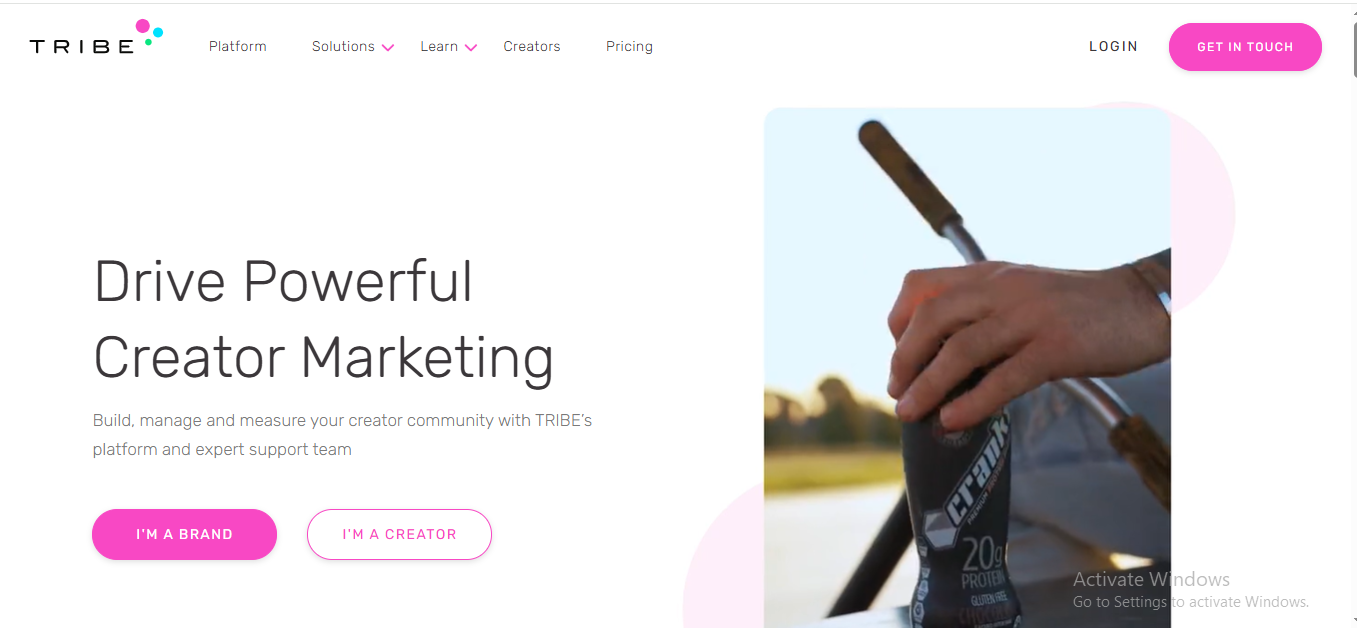
Basically a cool Aussie that gets UGC.
What I loved:
TRIBE is the ultimate “set it and forget it” platform for UGC campaigns. You create a brief, toss it out to their influencer fam, and BAM — pitches start rollin’ in. The vibe is very casual-creative, and I loved the fact that creators pitch their content ideas before you spend a dime.
What I didn’t:
TRIBE feels a bit pay-to-play. You gotta pay just to unlock pitches — so there’s some upfront risk. Also, if you’re looking for long-term creator partnerships, TRIBE isn’t built for that kind of romance.
Pros:
-
Amazing UGC workflow
-
Pay per post, no subscription
-
Creators pitch before you commit
Cons:
-
Limited influencer relationship tools
-
No deep analytics or CRM-style features
Pricing: Pay-as-you-go. Great for small-to-mid brands.
12. Braze
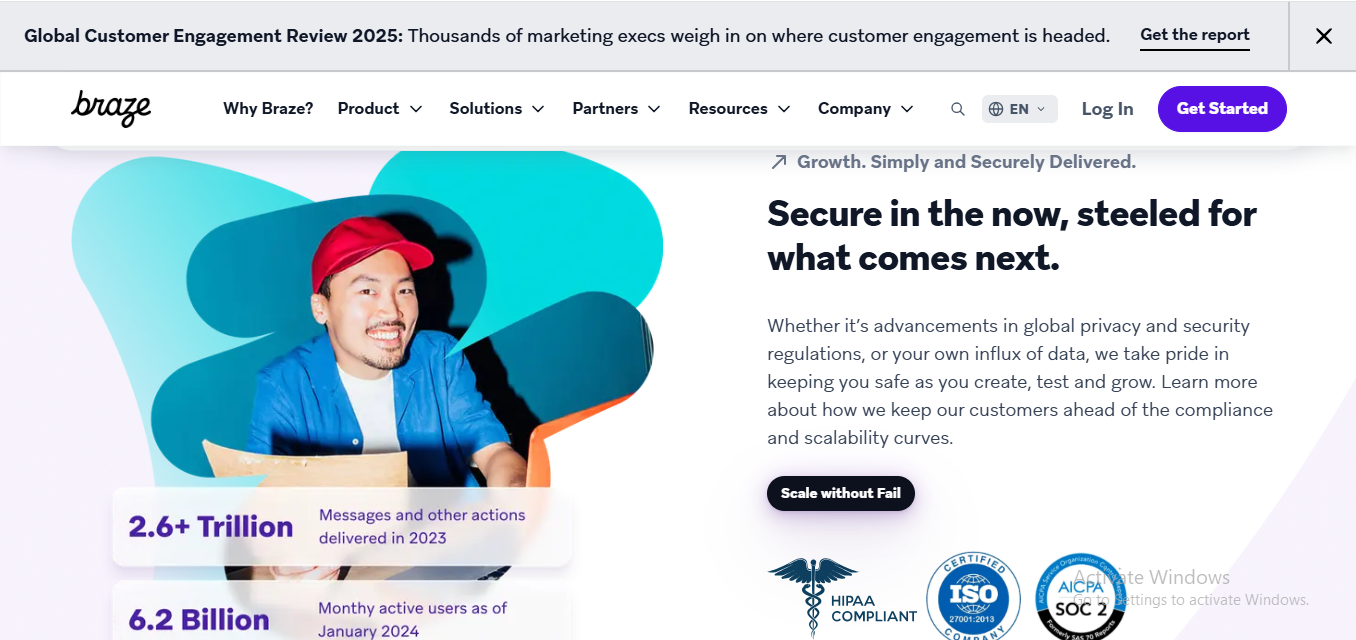
More tech-heavy than your average influencer tool – this one’s for the data nerds 🧠
What I loved:
Okay, Braze is technically a customer engagement platform, not a straight-up influencer tool — but hear me out. If you’re doing influencer work and want to turn those eyeballs into email subscribers or app users, Braze helps connect the dots. Think push notifications, SMS campaigns, personalization galore.
What I didn’t:
It’s overkill if you just want to book a few creators for TikTok reels. Also, it’s expensive — like enterprise level, Silicon Valley startup kind of expensive.
Pros:
-
Wicked strong data tools
-
Great if you’re scaling multi-channel marketing
-
Strong API + integrations
Cons:
-
Not influencer-first
-
Takes time to set up + learn
Pricing: Custom. (Translation: It’s gonna cost ya.)
13. IZEA
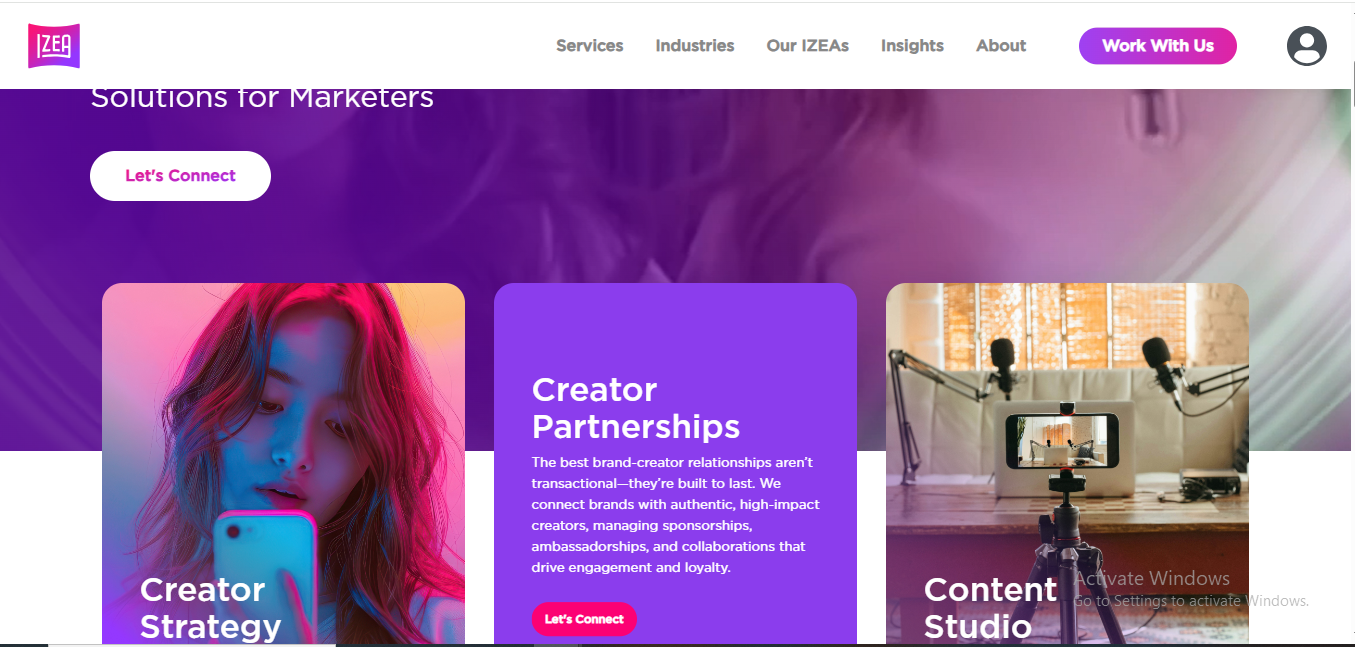
Been around since MySpace but still holding it down.
What I loved:
IZEA’s got options. Like, ALL the options. Marketplace, managed services, content-only deals, even influencer payments. It’s an OG platform, and you can feel the experience baked into it. The automation tools are fire if you’re juggling a ton of creators.
What I didn’t:
The UI feels a bit 2015-ish — could use a glow-up. Also, campaign creation can be kinda clunky if you’re not a pro. The onboarding should be way smoother for newbies.
Pros:
-
All-in-one platform
-
Tons of campaign types
-
Good automation + reporting
Cons:
-
Meh UI
-
Can feel bloated
-
Pricey for some features
Pricing: Marketplace access is affordable; managed services are $$$.
14. Insense
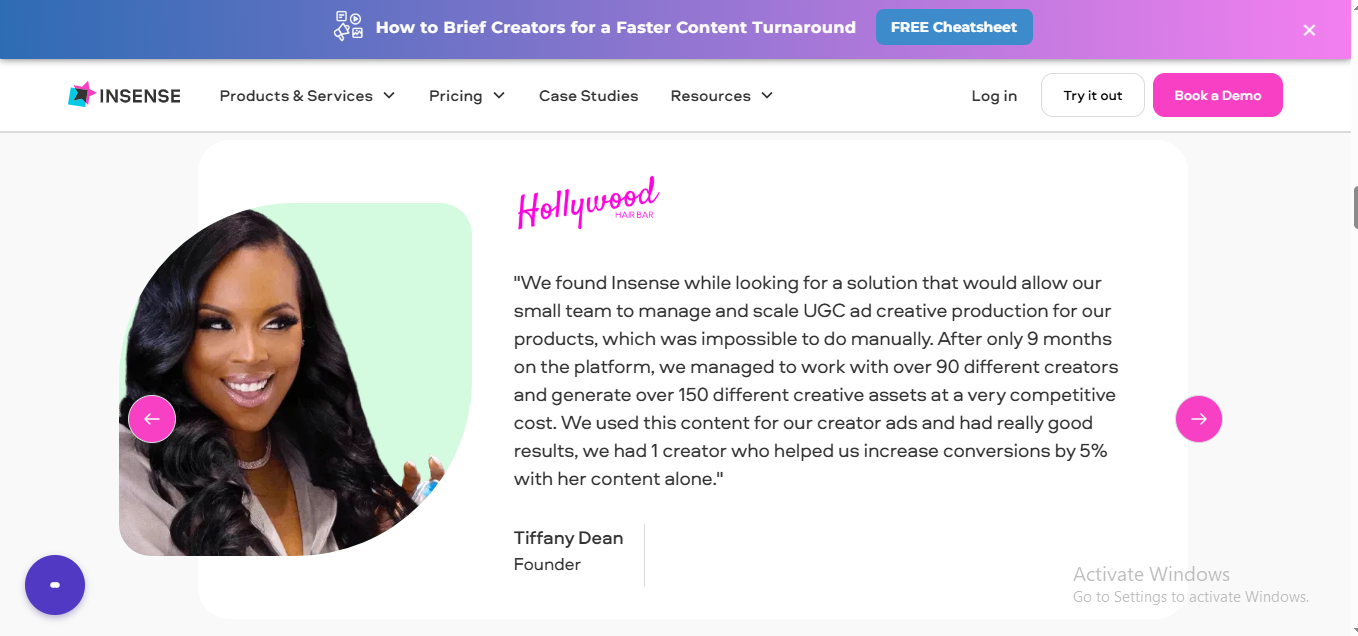
The matchmaker for brands and creators who hate awkward DMs.
What I loved:
Insense is like Hinge, but for influencer collabs. It’s super straightforward — you drop a brief, and the creators apply. The platform’s sweet spot? Paid ads + UGC. Great for Meta Ads and TikToks that actually convert. I was really into the whole Facebook ads creator pairing thing.
What I didn’t:
You gotta be pretty precise with your briefs. If you’re vague, expect chaotic submissions. And honestly, some of the creators feel like they’re just blasting out content for a check, not super passionate vibes.
Pros:
-
Killer for ad-ready UGC
-
Easy to navigate
-
Great value for mid-budget brands
Cons:
-
Brief quality makes or breaks results
-
Not ideal for influencer “relationships”
Pricing: Tiered monthly plans + pay per collab. Fair pricing.
15. Influence.co
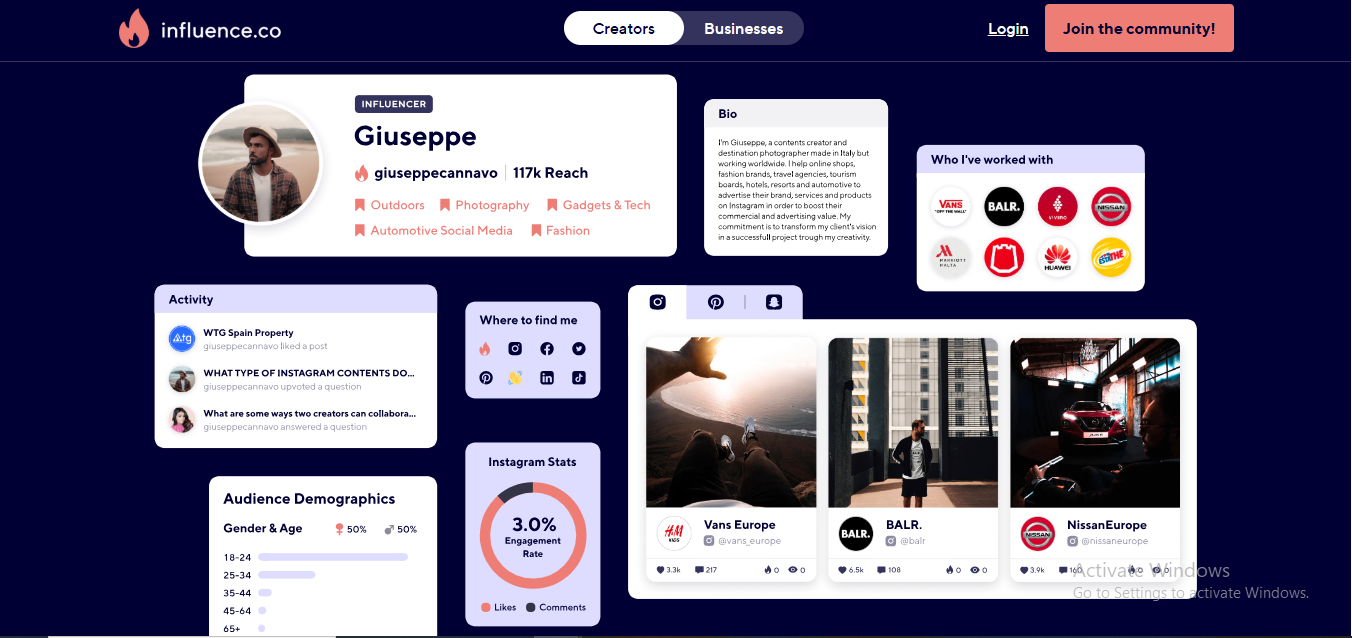
The social network for influencers. Think LinkedIn, but with ring lights.
What I loved:
It’s not just a tool — it’s a community. Influence.co lets creators flex their portfolios and connect with brands directly. Great for networking, learning, and finding people who actually care about their craft. Also: free profiles for influencers = a win.
What I didn’t:
Campaign tools feel super lightweight. If you’re a brand trying to do complex influencer strategy, this won’t give you the heavy-lifting features like CRM or data reporting.
Pros:
-
Amazing networking features
-
Great creator profiles
-
Free to join
Cons:
-
Not a full campaign platform
-
Lacks serious analytics
Pricing: Free for basic use; premium for brands.
16. Influencer.com
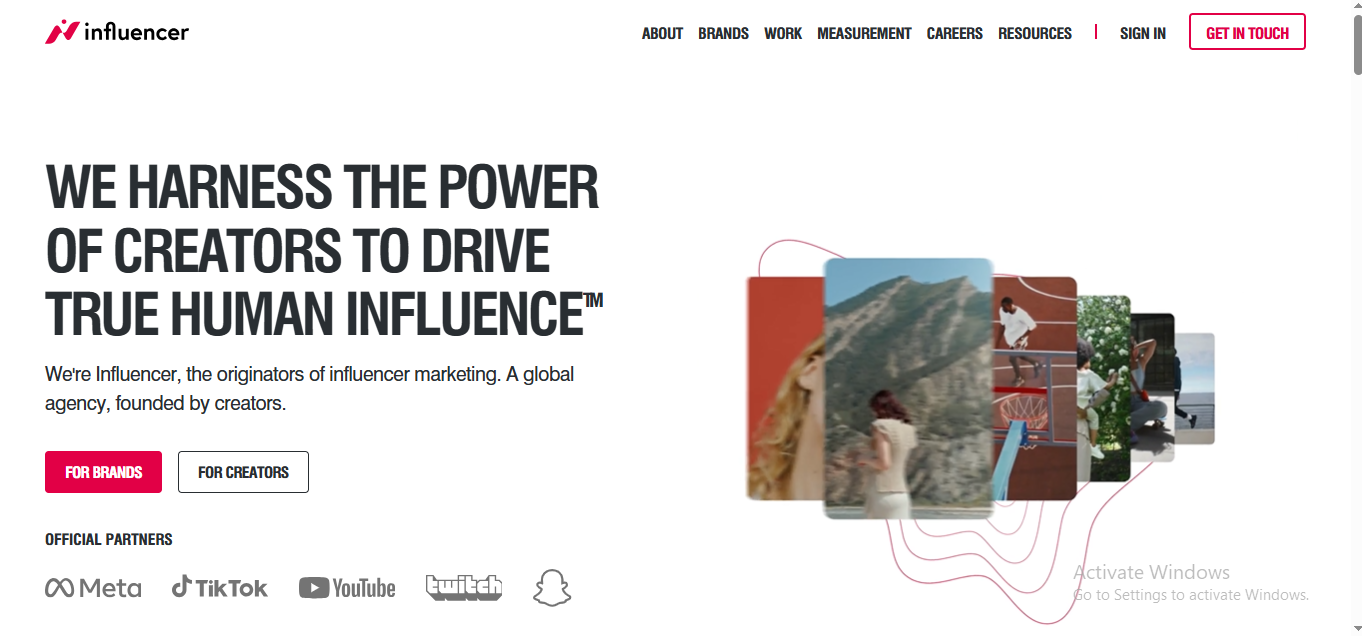
The clean girl aesthetic of influencer platforms.
What I loved:
First off, the UI is a vibe. Modern, clean, very agency-core. Influencer.com is focused on end-to-end campaigns — discovery, brief creation, tracking, the whole shebang. It also integrates nicely with ecom metrics, so you can track those conversions like a boss.
What I didn’t:
It leans heavily toward managed services. If you’re a DIY brand or startup, it’s gonna feel like showing up to brunch in sweats while everyone else is in Balenciaga.
Pros:
-
Sleek, agency-style platform
-
All-in-one influencer marketing solution
-
Great reporting
Cons:
-
Feels too polished for scrappy startups
-
Not super intuitive for small biz users
Pricing: Custom – more for big brands + agencies
17. Later
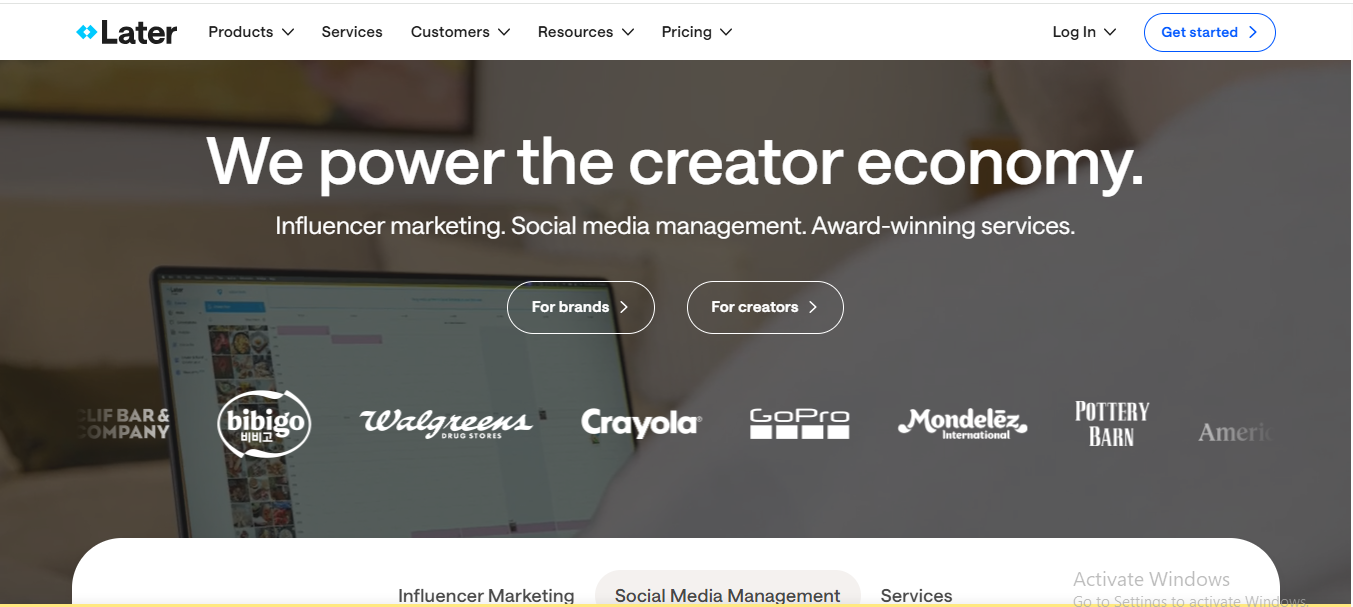
Social media planner that grew up and started hanging with influencers.
What I Loved:
Later is like that nerdy kid in school who went to uni, got hot, and came back running things. Originally known for scheduling IG posts, Later has stepped into the influencer world with Collabs — a tool that lets brands discover, manage, and pay creators all in one place. Bonus points for their auto-generated performance reports and the super clean interface. Seriously, it’s a vibe.
What I Didn’t:
It’s still a little surface-level if you’re running major campaigns or juggling dozens of creators. More like “lightweight influencer tool meets heavy-duty scheduler.” Great for UGC and small-medium influencer gigs — but not for the Fortune 500 ballers.
Pros:
-
Gorgeous UI
-
Seamless IG + TikTok workflow
-
Creator discovery built in
Cons:
-
Not deep enough for full-on campaigns
-
Reporting’s good, not amazing
Pricing:
Starts at $25/mo for solo users. Business plans for teams. Collabs feature costs extra depending on campaign size.
18. Shout Agency
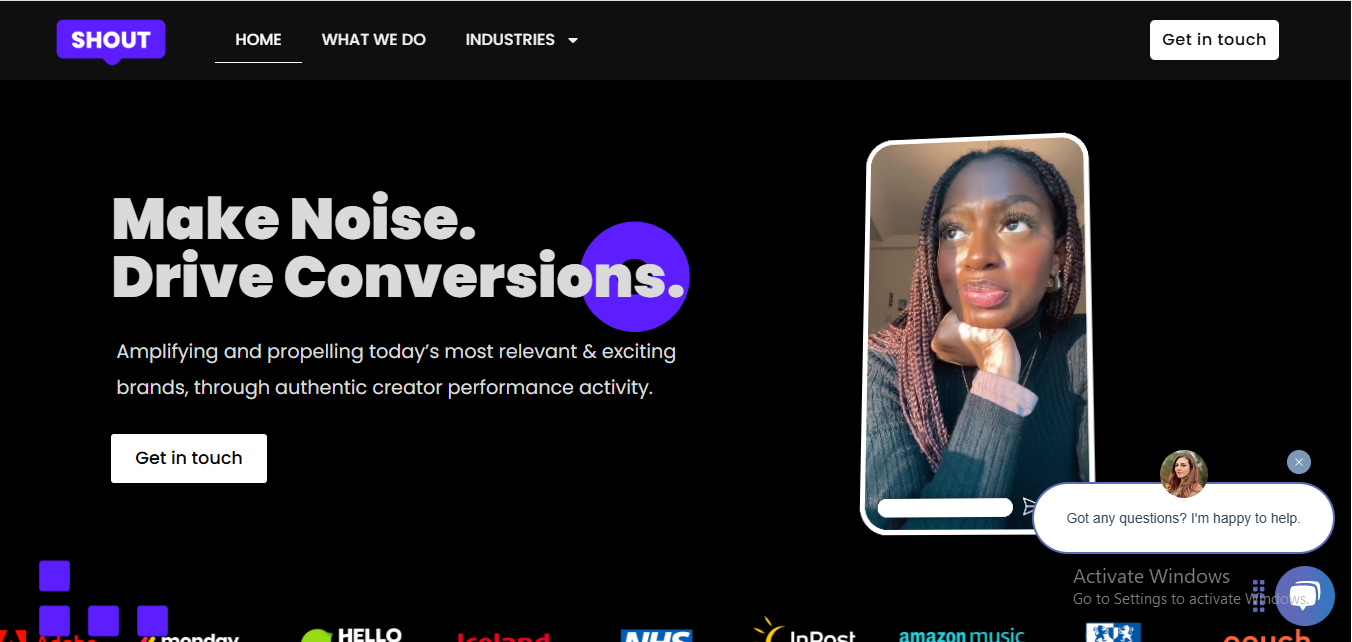
Australian-based agency with chill vibes and sharp influencer campaigns.
What I Loved:
Shout is more than just vibes — they do strategy and execution, and they bring the thunder with real influencer relationships. Think bespoke campaigns, handpicked creators, and results that actually slap. Loved the transparency — they don’t just sell numbers, they explain why stuff works.
What I Didn’t:
They’re an agency, not a platform — so no DIY dashboard here. If you’re into rolling up your sleeves and doing things yourself, this might feel too hands-off. Also, it’s agency pricing… so don’t expect Fiverr rates.
Pros:
-
Super strategic + custom campaigns
-
Great for APAC and global brands
-
Killer influencer match quality
Cons:
-
Not self-service
-
More expensive than SaaS platforms
Pricing:
Custom quotes only. Think 4 figures and up.
19. Klear
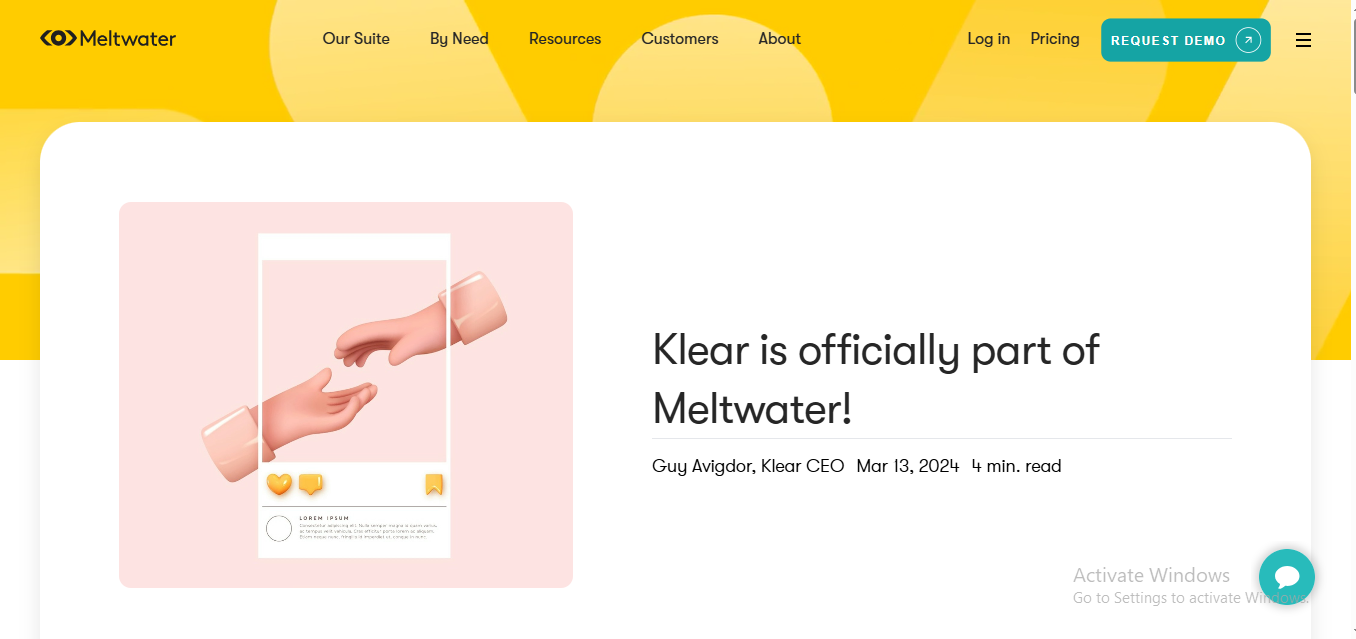
Basically the influencer data detective you didn’t know you needed.
What I Loved:
Klear is STACKED with features. We’re talking discovery, tracking, influencer vetting, performance analysis, and even fraud detection. Yup, they’ll tell you if someone bought followers like it’s 2017. The filters are tight, and the influencer profiles are super detailed — it’s giving LinkedIn for creators but better.
What I Didn’t:
It’s kinda overwhelming. Like, there’s a learning curve. Not ideal if you want to get in and start booking creators by lunch. Also, the vibe leans enterprise — so if you’re a tiny skincare brand on Shopify, this might feel like too much.
Pros:
-
Deep influencer analytics
-
Fraud check tools = chef’s kiss
-
Good CRM for long-term collabs
Cons:
-
Steep learning curve
-
Not beginner-friendly
Pricing:
Enterprise-level pricing. No public numbers, but expect to cough up $$$.
20. Brandbassador

The street team of the digital world — and honestly, kind of a party.
What I Loved:
If you want superfans hyping your brand like Swifties during album drops, Brandbassador’s your platform. It’s not just about influencers — it’s about building a community of ambassadors who do tasks (post, review, refer) in exchange for rewards. Gamified AF. The dashboard’s fun and user-friendly, and the campaigns feel way more personal than cookie-cutter shoutouts.
What I Didn’t:
Managing tasks and rewards gets time-consuming fast. Also, works best for lifestyle, fashion, and beauty — if you’re selling SaaS or finance apps… not your crowd.
Pros:
-
Strong community feel
-
Gamified missions = high engagement
-
Works great with micro- and nano-influencers
Cons:
-
Manual-heavy management
-
Not for B2B
Pricing:
Starts at a few hundred bucks/month. Scales up with usage and features.
21. Shout UGC
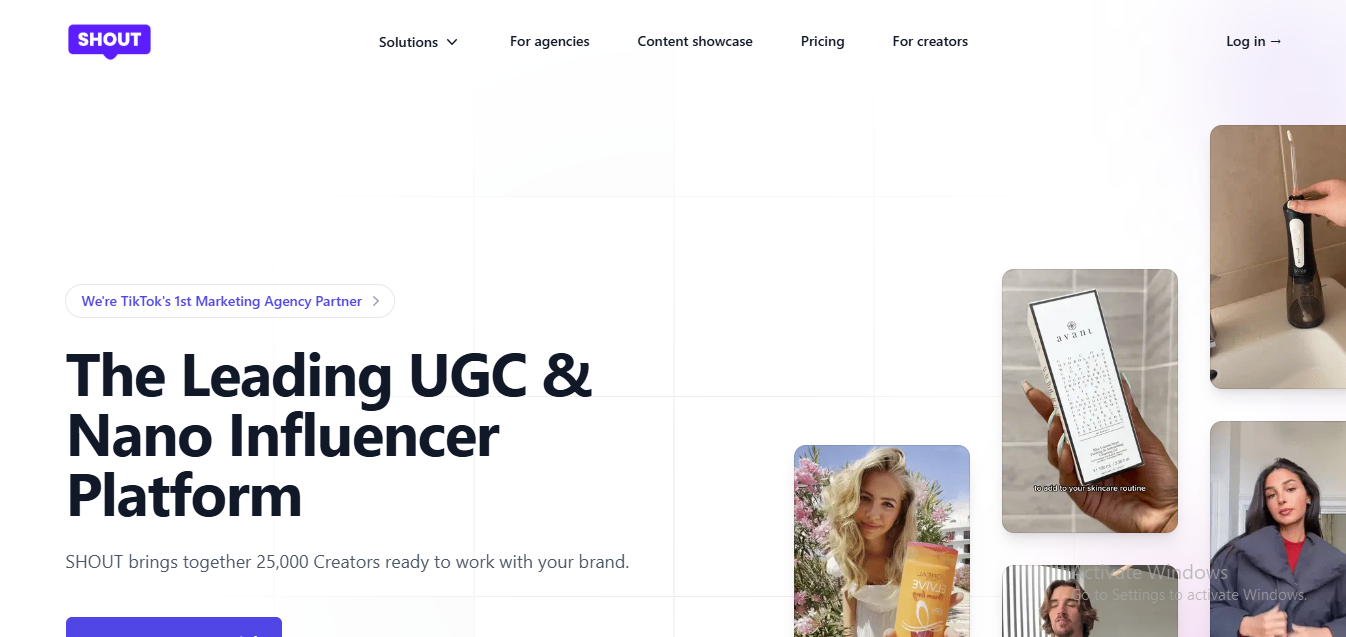
UGC marketplace vibes with a clean look and fast turnaround.
What I Loved:
This one’s all about user-generated content (duh). Shout UGC is perfect if you want product reviews, lifestyle shots, or short vids without dealing with the whole influencer drama. I dropped a brief, got dozens of submissions, and picked the ones I vibed with. Super streamlined process — like ordering sushi on an iPad at a fancy place.
What I Didn’t:
You don’t really build relationships here. It’s transactional. Great for content, not for ongoing influencer partnerships. Also, some creators submit meh stuff — gotta dig for the gold.
Pros:
-
Fast UGC creation
-
Affordable content
-
Easy-to-use brief builder
Cons:
-
One-off vibe, not long-term collabs
-
Quality varies by creator
Pricing:
Flat fee per asset or creator. Budget-friendly for most brands.
22. CreatorIQ
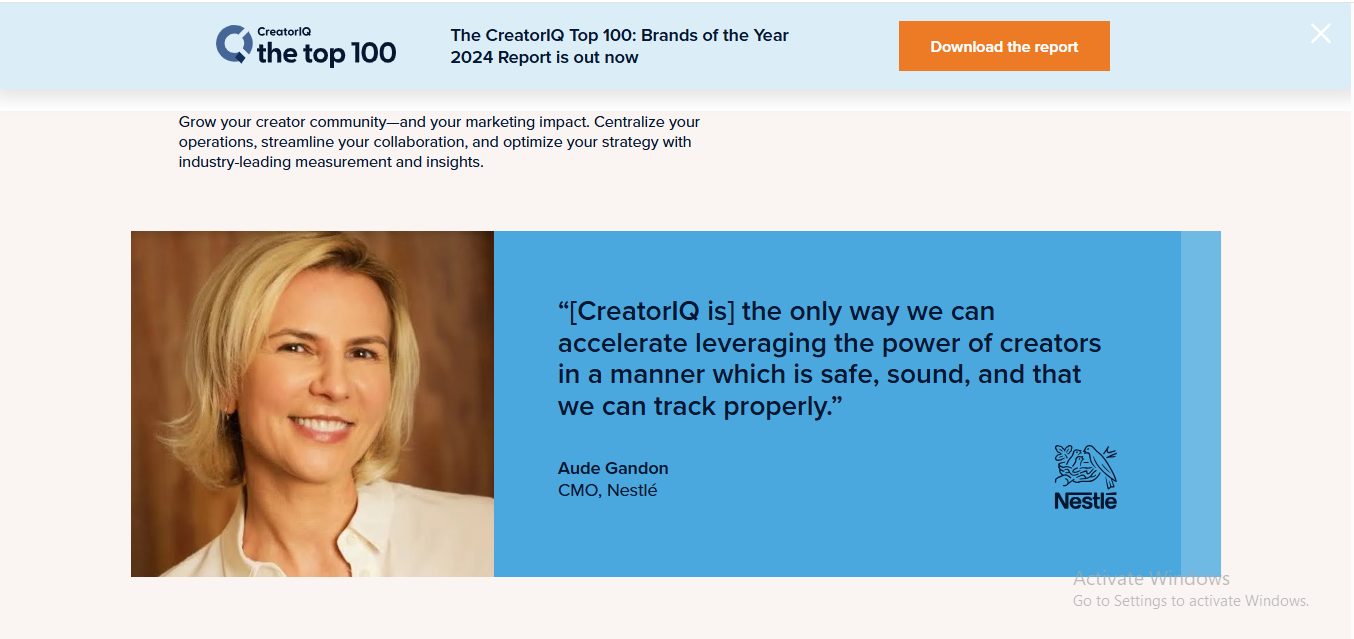
The god-tier platform for influencer marketing if your wallet can handle it.
What I Loved:
Okay, CreatorIQ is the Beyoncé of influencer platforms. Massive database, AI-powered discovery, fraud detection, campaign tracking, API integrations — the whole nine yards. Big brands love this thing, and I can see why. The insights go deep — like, “this creator’s audience loves mid-century furniture and vegan tacos” kind of deep.
What I Didn’t:
Honestly, unless you’ve got a dedicated team, it’s too much. The onboarding is intense, the features can overwhelm, and the pricing is not for startups. But if you’re running global influencer ops? This thing’s your command center.
Pros:
-
Insane amount of features
-
World-class analytics + fraud filters
-
Built for scale
Cons:
-
Price tag = oof
-
Steep onboarding curve
Pricing:
Enterprise-level. If you have to ask, you probably can’t afford it yet
23. InfluencerMarketing.ai
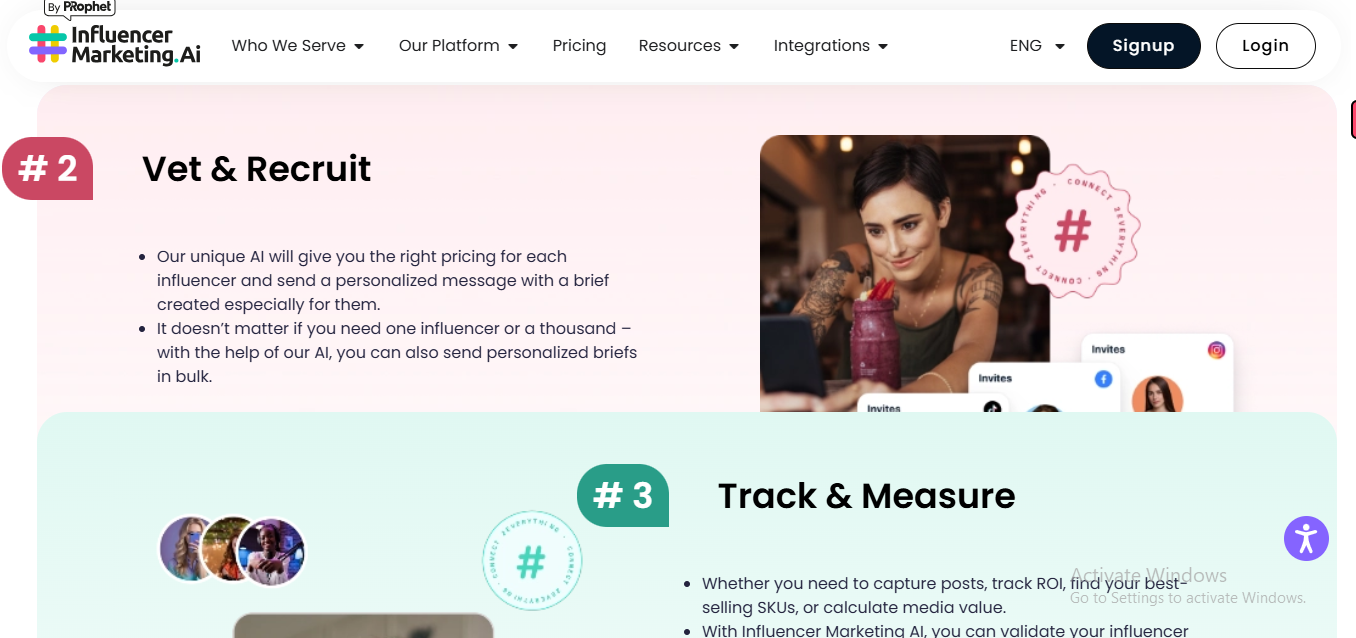
The AI-powered wizard trying to do it all — and kinda pulling it off.
What I Loved:
Okay, this one surprised me. It’s like ChatGPT met influencer marketing and had a super organized digital baby. InfluencerMarketing.ai helps you discover creators, track performance, manage campaigns, and even do competitor analysis (sneaky but useful 👀). The AI bits are cool — like auto-suggesting influencers based on campaign goals and giving you smart budget advice.
What I Didn’t:
The UI isn’t the sexiest thing I’ve seen, and it can feel a bit “spread thin” — like it’s trying to do everything and doesn’t master any one area yet. The analytics are solid but not as in-depth as some of the bigger names.
Pros:
-
Affordable all-in-one tool
-
AI recommendations are helpful
-
Decent creator search and performance tracking
Cons:
-
Interface could use a makeover
-
Lacks deep analytics on audience quality
Pricing:
Budget-friendly! Starts around $49/mo. Great value for small brands and solo marketers.
24. Traackr

The OG platform that takes influencer data very, VERY seriously.
What I Loved:
Traackr is like the spreadsheet nerd who runs the entire office. It’s all about influencer performance tracking over time. You can filter creators by performance history, audience engagement, niche, geography, you name it. I love how it tracks ROI beyond vanity metrics and gives you actual value per post data. For serious campaigns that need receipts, this one delivers.
What I Didn’t:
Discovery isn’t its strong suit — it’s more about managing existing influencers than finding new ones. Also, it’s built for enterprise folks, not your average TikTok skincare brand.
Pros:
-
Top-tier performance + spend tracking
-
Long-term ROI insights
-
Great for enterprise campaigns
Cons:
-
Not the best for influencer discovery
-
Pricey AF if you’re just starting out
Pricing:
High-end. Expect to talk to sales and enter that “custom pricing” zone ($$$$).
25. Upfluence
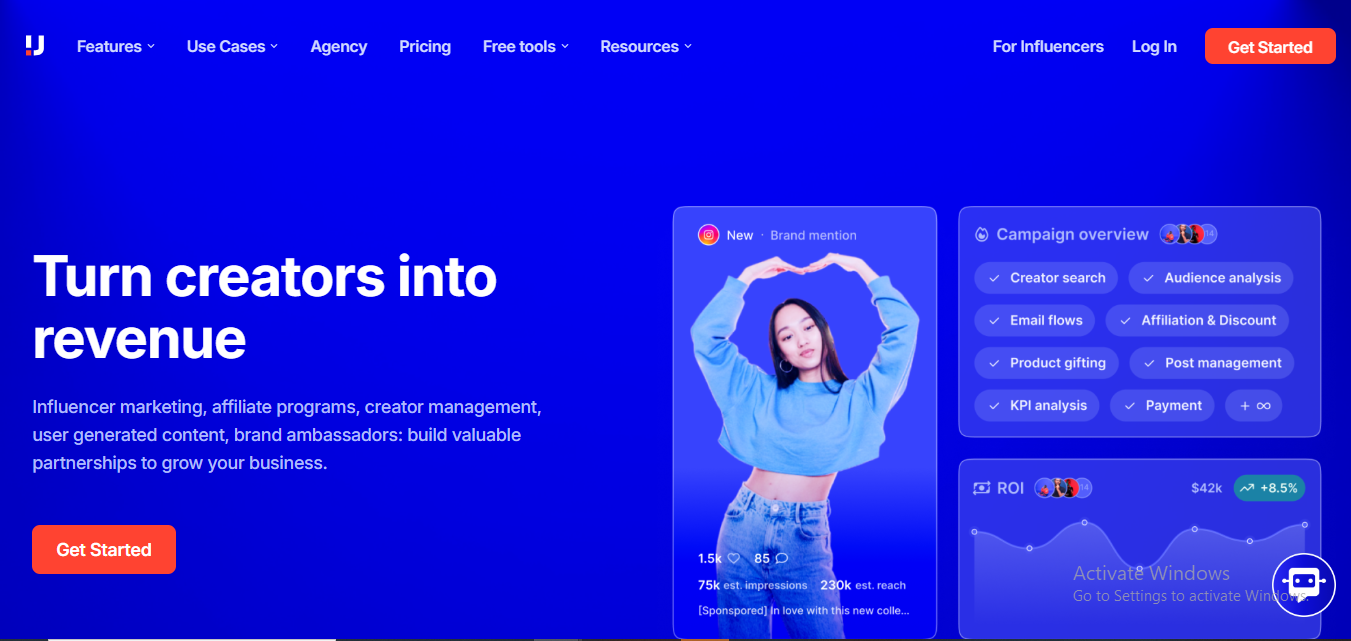
The influencer platform that wants to be your in-house agency.
What I Loved:
Upfluence has been around a minute, and it shows — in a good way. The search functionality is 🔥, you can filter by engagement rate, audience location, keywords, and more. But what really got me was the eCommerce integration. If you’re on Shopify or WooCommerce, you can find customers who are already influencers. Wild, right?
What I Didn’t:
The learning curve is real. It’s a bit of a beast to navigate at first, and the interface, while functional, isn’t exactly TikTok-smooth. Customer service can also be hit or miss depending on your tier.
Pros:
-
Killer eCom integrations
-
Super detailed search filters
-
Streamlined campaign workflow
Cons:
-
Takes time to learn
-
UI feels a little old-school
Pricing:
Starts around $795/month. Yeah, she’s not cheap — but worth it for the features if you’re scaling.
26. Meltwater

PR, social media, and influencer insights rolled into one fancy corporate sandwich.
What I Loved:
Meltwater’s a beast — not just for influencer stuff but also for media monitoring and competitive intelligence. If you’re doing PR + influencer work under one roof, this tool is chef’s kiss. Their influencer database is massive, and their analytics are 🔍 detailed. Plus, the social listening features help you ride trends like a pro surfer.
What I Didn’t:
Let’s be honest, Meltwater feels more like corporate software than creator-friendly cool. It’s data-rich but dry. Definitely not for someone just dipping their toe into the influencer pond.
Pros:
-
Combines PR + influencer analytics
-
Robust social listening tools
-
Great for big brands managing reputation
Cons:
-
Clunky UI
-
Not beginner-friendly
-
Costs a small fortune
Pricing:
Enterprise pricing again. Big bag alert
27. The Social Cat

Your plug for nano-creators and honest UGC vibes — without breaking the bank.
What I Loved:
OMG, this one is adorbs in the best way. The Social Cat connects you with nano-influencers (we’re talkin’ less than 10K followers) who are obsessed with authenticity. You send them your product, and they post cute, legit content in return — no mega contracts, no diva drama. I got solid content, great engagement, and didn’t have to remortgage my soul.
What I Didn’t:
Since they focus on nano-creators, don’t expect to go viral overnight. Also, it’s mostly product-for-post collabs, so it won’t suit every biz. But for startups or DTC brands? This is a hidden gem.
Pros:
-
Budget-friendly UGC
-
Authentic nano-creator community
-
Simple AF to use
Cons:
-
Limited reach
-
Not ideal for major campaign goals
Pricing:
Free to browse, pay per collab. Most packages are under $200 — total steal tbh.
28. Mavrck

The enterprise-level influencer machine — with brains, brawn, and big-brand energy.
What I Loved:
Mavrck feels like that kid in school who’s good at everything — math, gym, drama club, AND somehow still humble about it. It’s a full-service influencer marketing platform that lets you recruit, manage, and measure influencer campaigns from start to finish. What’s cool is that it works across the whole “influencer pyramid” — from employees and customers to celebs and macro creators.
Their automation is next level. You can trigger campaigns based on actions, auto-track conversions, and even pull from your customer base to find micro-influencers. It’s like influencer marketing on autopilot. Also, the integration with CRMs and eComm platforms like Shopify and Salesforce? Smooth
What I Didn’t:
Honestly? The UI could use some love — it’s functional but not very sexy. Also, if you’re a small biz or startup, you might feel like you’ve walked into a boardroom meeting in flip-flops. It’s really built for brands with big budgets and marketing teams.
Pros:
-
Handles influencer campaigns like a boss
-
Works with employees, customers, and creators
-
Killer automation + smart workflows
-
Solid tracking and analytics for ROI
Cons:
-
Not super beginner-friendly
-
Pricing is steep — more for enterprise peeps
-
UI needs a glow-up
Pricing:
It’s “talk to sales” territory. Translation: You’re likely lookin’ at $2K/month+ for access to the real juicy features.
29. The Influencer Room
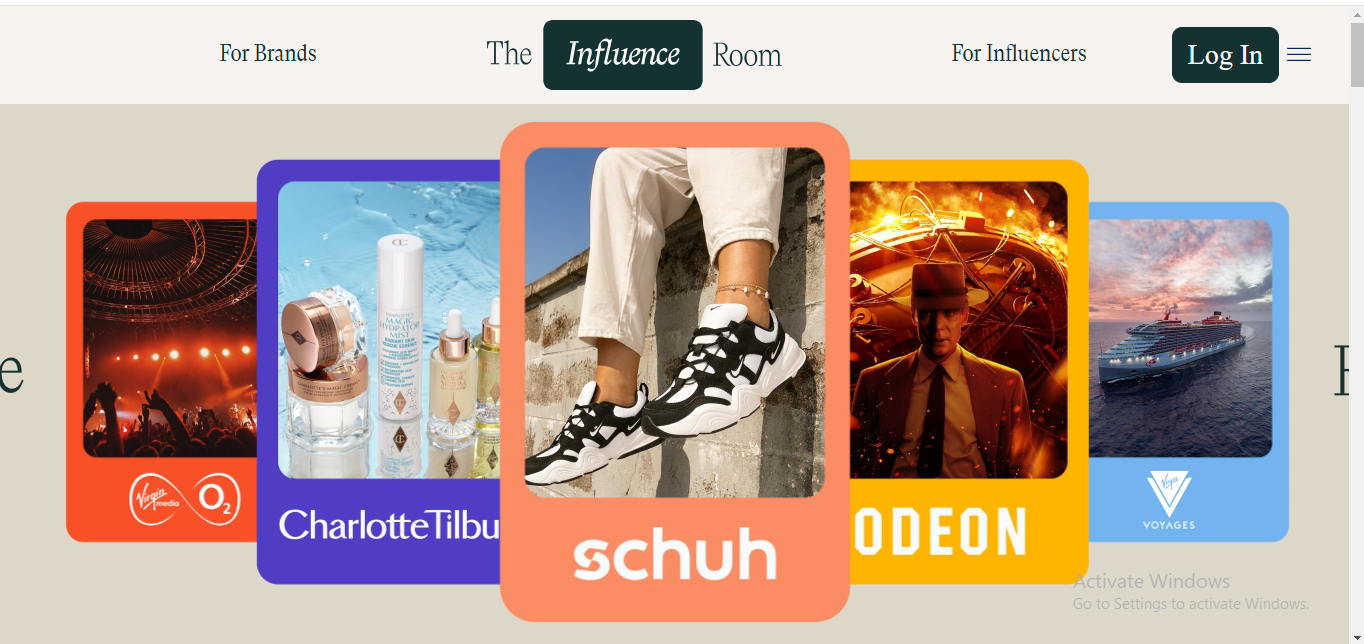
Where cool meets curated — think Soho House, but for brands and creators.
What I Loved:
So, The Influencer Room isn’t your typical dashboard-with-data type of deal. It’s more about community and connection — brands get matched with influencers through curated experiences and gifting, not cold outreach and spreadsheets. You basically join a private club, and everyone’s playing matchmaker behind the scenes.
The vibe is definitely premium — perfect for fashion, beauty, lifestyle, and those high-aesthetic Instagram brands. They focus on authenticity, long-term partnerships, and giving creators product drops they actually want to use. Bonus points: the platform tracks everything, so you’re not just throwing gifts into the void and hoping for a Reel in return.
What I Didn’t:
It’s not built for massive-scale campaigns. If you want to do a 500-creator product seeding blitz, this ain’t it. Also, because it’s all curated, it can be a lil’ slower than platforms with instant search and auto-invite features.
Pros:
-
Focus on genuine relationships
-
High-end creator network
-
Unique gifting-based model
-
Low-key but luxe vibes
Cons:
-
Not ideal for fast or large-scale campaigns
-
Curation model may not suit every niche
-
Limited if you want full control over discovery
Pricing:
More accessible than you’d think — flexible packages depending on campaign size, but still built for mid-size and premium brands.
Wrapping It Up:
Choosing the right influencer platform depends on your brand’s size, budget, and goals. Whether you’re a startup looking for affordable options or a big brand seeking comprehensive analytics, there’s a platform out there for you. Remember, it’s not just about the tools but how you use them. Happy influencing!
- Best Lusha Alternatives for 2025 - April 22, 2025
- Best Overloop Alternatives for 2025 - April 22, 2025
- Best 6sense Alternatives for 2025 - April 22, 2025



